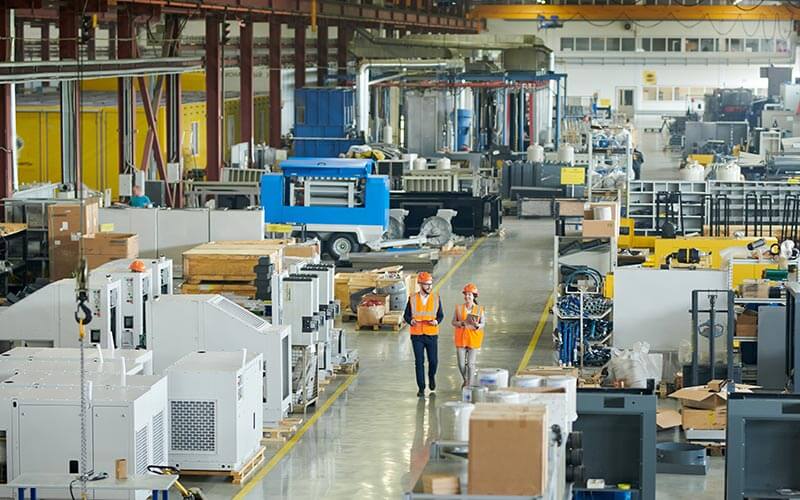Embarking on a new year is the perfect time for plant managers and operational leadership to take stock of where their manufacturing companies have been, and where they want to go next. This new year in particular, the COVID-19 pandemic revealed both pressing problems and unique opportunities for growth. Plant managers must find new ways to increase and support workers while enhancing shop floor safety and productivity. Let’s discuss how to address solutions to the top concerns for plant managers to make the most of new possibilities.
1. Improve Safety
Safety is always a top concern. OSHA statistics report that more than 4 million workers are injured annually, more than 4,000 fatally. At least 96 percent of those injuries are preventable. Add a pandemic to the mix and it’s time for operational leadership to double down on effective illness and injury prevention programs. The keys to successful safety programs include:
- Management leadership that empowers workers to be part of the solution
- Effective identification and assessment of hazards
- Prevention of the identified hazards
- Ongoing training
- Constant evaluation and improvement
Clear coordination between management and workers is essential to protecting workers. Technological advances like Anvl software can facilitate this coordination and empower safety teams to ferret out seemingly invisible risks for enhanced injury prevention. Along with robust training and constant reassessment, companies can make significant improvements this year in keeping workers safe and healthy on the job.
2. Boost Worker Training
Training is never a “once-and-done” thing. It’s an ongoing process. Workers and managers should constantly be improving their education and training. Effective operational leadership entails educating workers from day one about how their job fits into the company’s overall business goals, and setting clear, measurable expectations. Never underestimate the ability of workers to succeed if they have the right tools, information and training. In many cases, well-trained workers can improve productivity and protect safety on the shop floor more effectively, creating a more rewarding work environment and an impressive competitive edge.
3. Break Down Communication Barriers
Safety and training both rely on effective communication, from management to the most recent new-hires. A Deloitte study reported that some of the biggest inefficiency problems are communication barriers. According to the study, the biggest time wasters at work were problems getting needed information to accomplish tasks, ineffective communication, outdated or wrong information, and having to use older paper processes to accomplish tasks. All together, these and other communication problems added up to about 2.8 hours of work lost per week, per worker. All of that lost productivity could be remedied by effectively connected workers who are using digital technologies with better access to current data, the ability to quickly communicate with the right people, at the right time, whether at a remote location or in the facility. The connected worker spends more time accomplishing needed tasks, avoiding risks and making smart decisions in concert with coworkers, plant managers and good data.
4. Maximize Efficiency for Slower Work Processes
Every company, every manufacturing plant, and every remote location has those areas and processes where things often tend to get bogged down. By leveraging data and analytical tools, this is the year for plant managers to assess those specific areas to find ways to safely improve efficiency where it counts. Sometimes, just connecting workers to the right technological tools can get the job done better and faster, but it requires operational management to work together with frontline workers to identify, assess and improve those slow processes.
5. Standardize Processes Across Multiple Branches
This is especially important for growing companies with multiple manufacturing locations and diverse worker populations. By using technological advances like those available with Anvl, decision makers can optimize and standardize processes, training and safety protocols across multiple locations, which can increase efficiency, protect worker safety and lead to important competitive advantages.
6. Stay Competitive
The fact is, as Kearney reports, even today 72% of manufacturing tasks are necessarily performed by human workers. Furthermore, it’s the humans that bring the creativity, ideas, skill and dexterity that create competitive advantages, even in the most robotic of manufacturing operations. Humans are the key, always. Keeping them safe, well-trained and connected through digital transformation is the key to helping them reach their potential as workers and to helping them contribute to reaching your company’s competitive goals.
Technology Can Address Top Concerns for Plant Managers
Anvl’s solution can address each of these top concerns in your manufacturing operations. With the proper tools, the connected worker and plant manager become a reality, saving you time, increasing efficiency and tuning up your competitiveness. Digital documentation is accessible, up-to-date and standardized across locations, ensuring uniform quality, productivity and safety compliance across the board. Request a free demo today and discover how Anvl can turn your top concerns into your top advantages.


